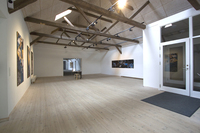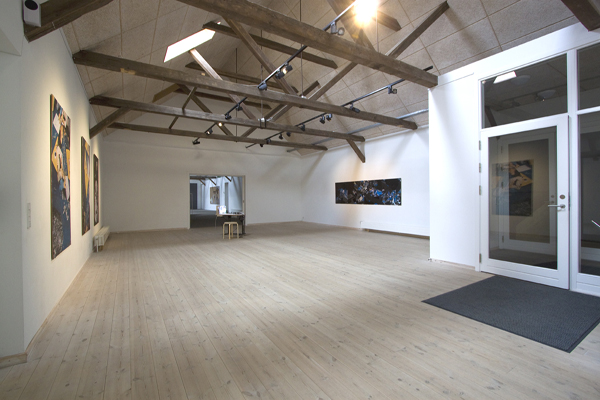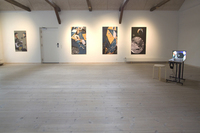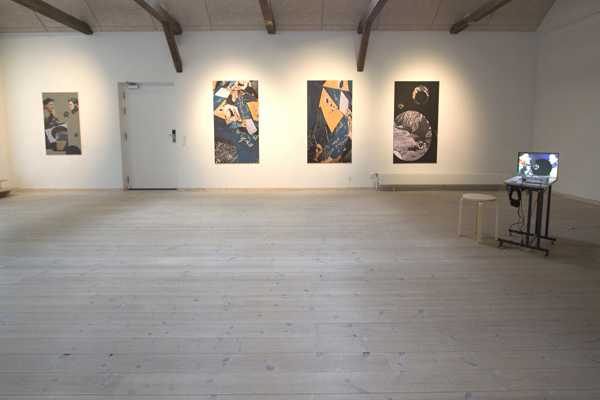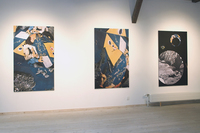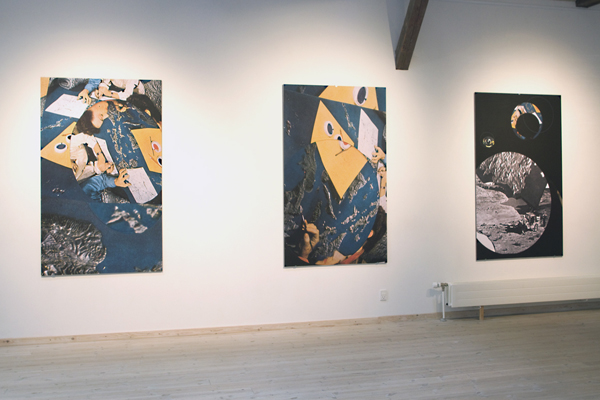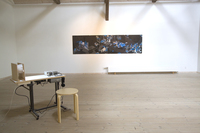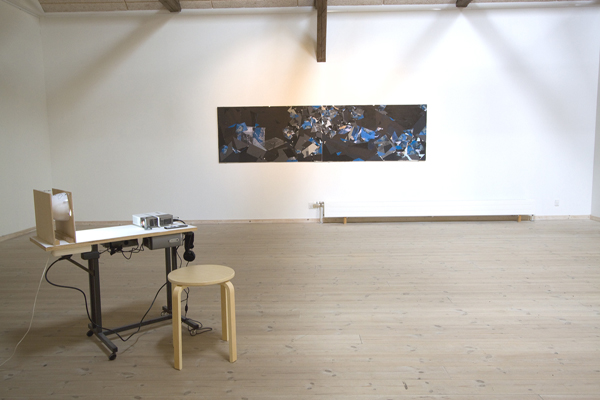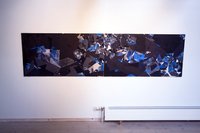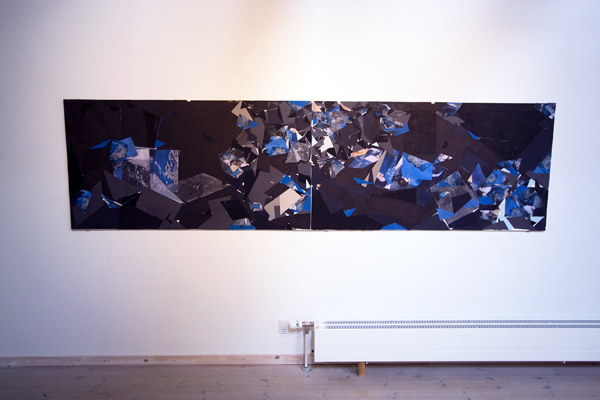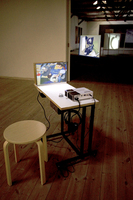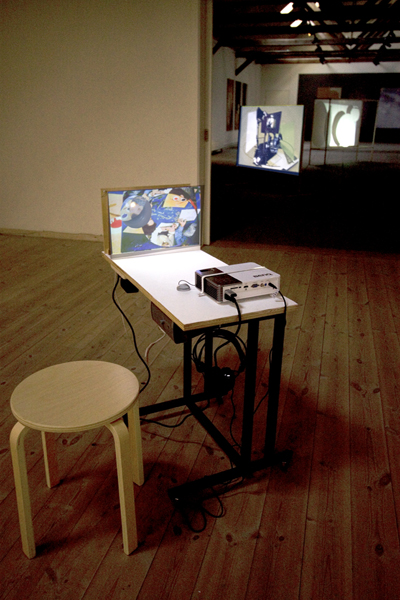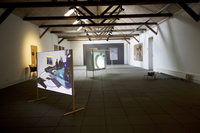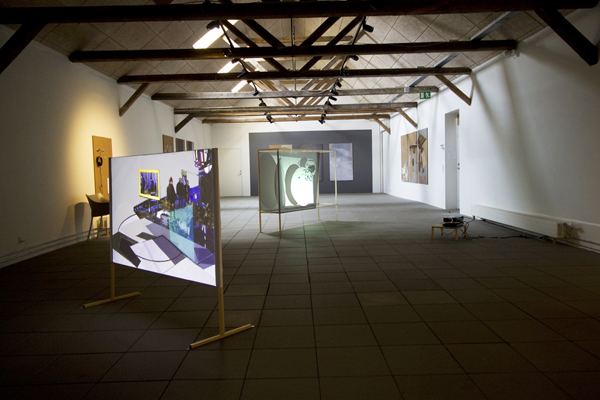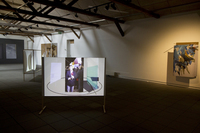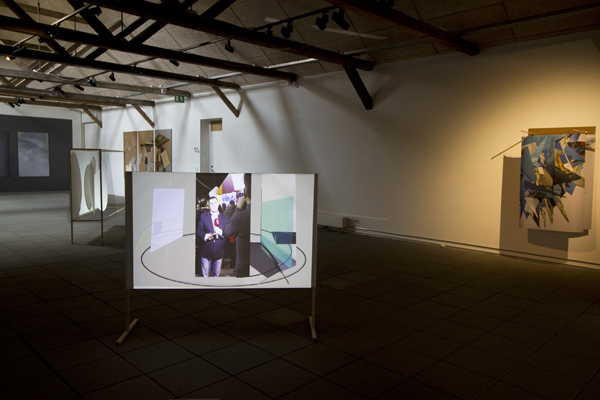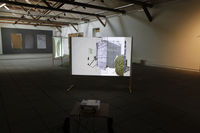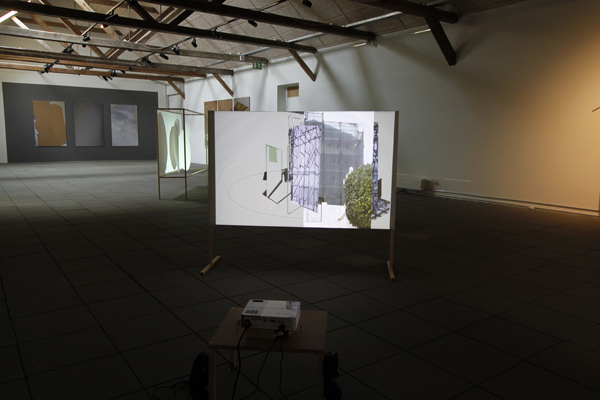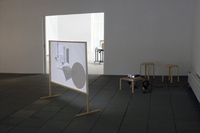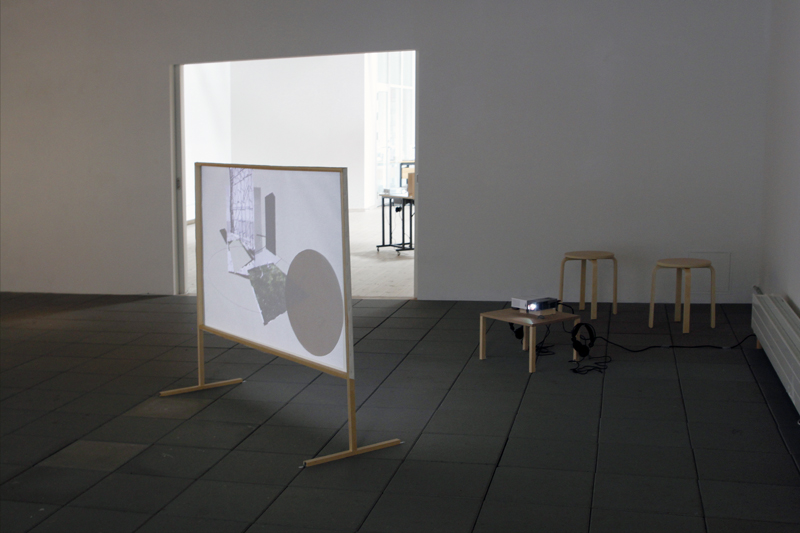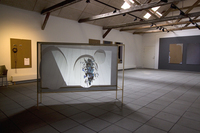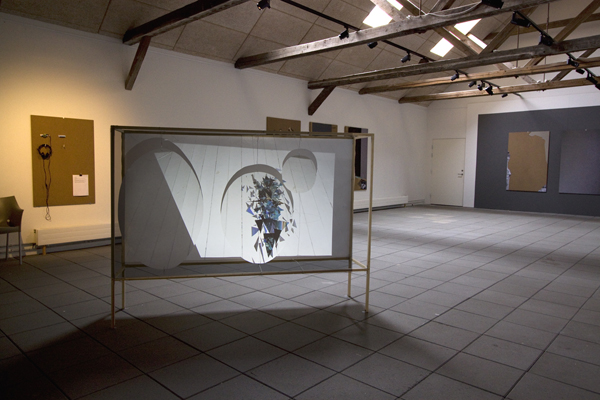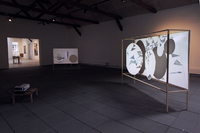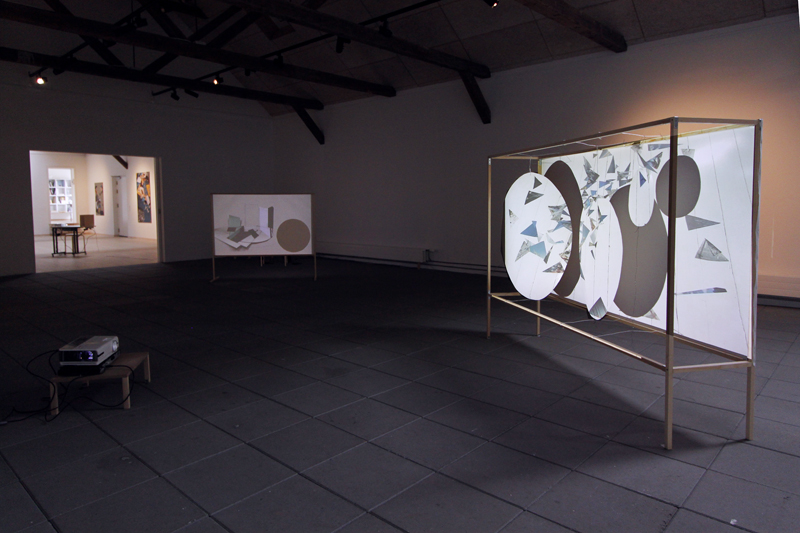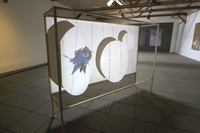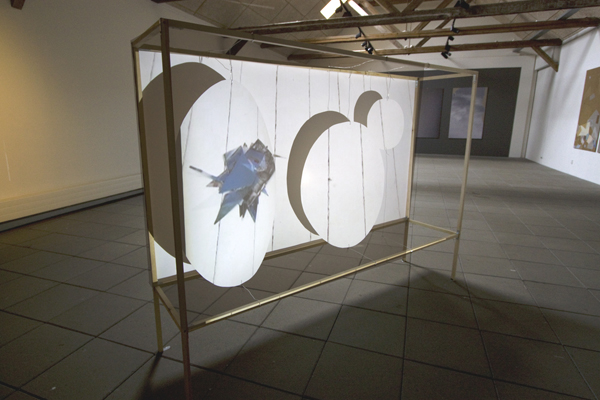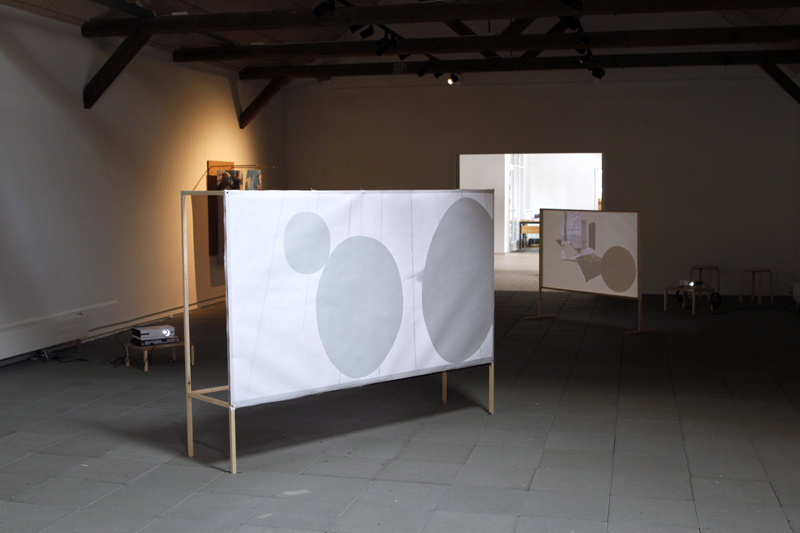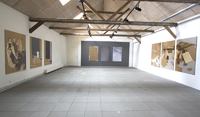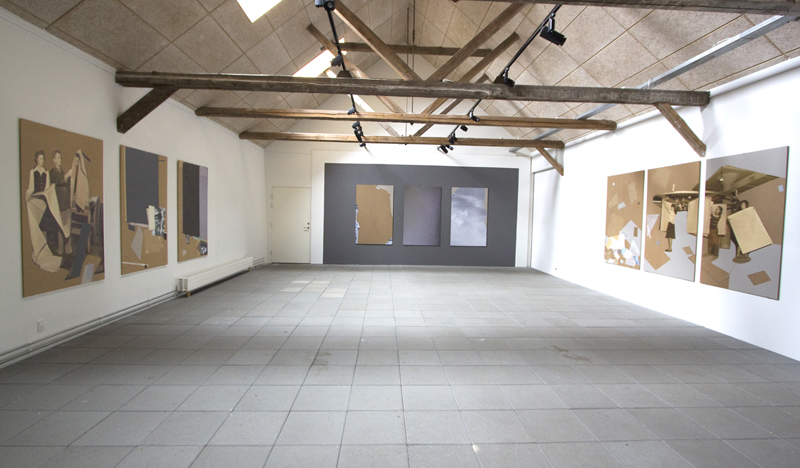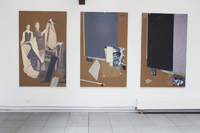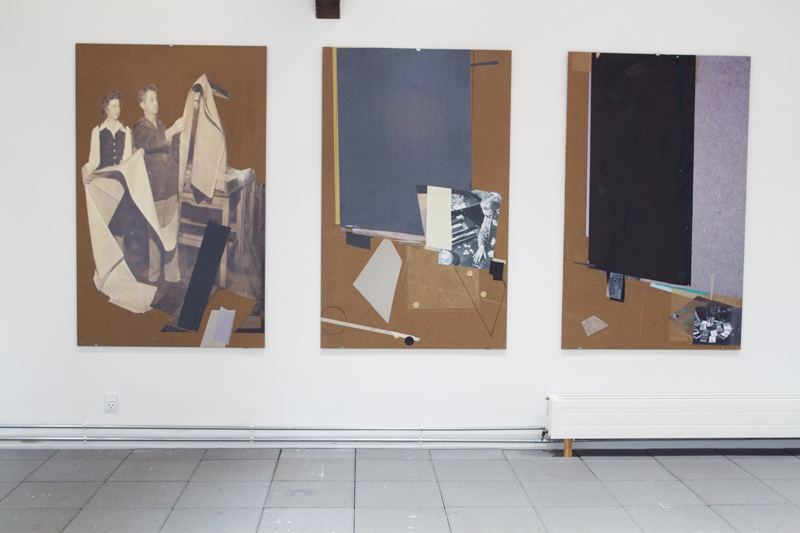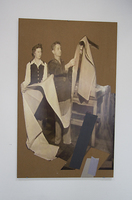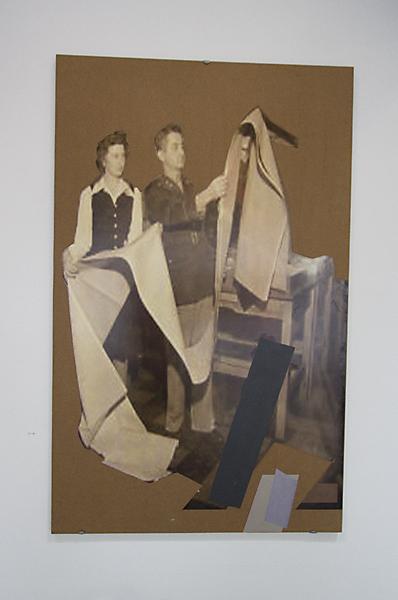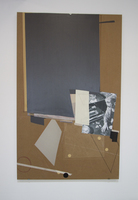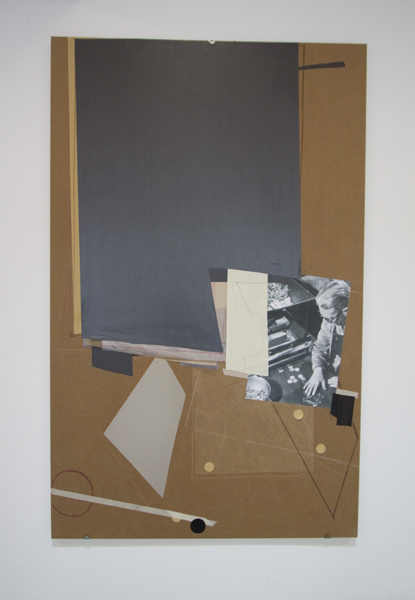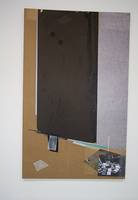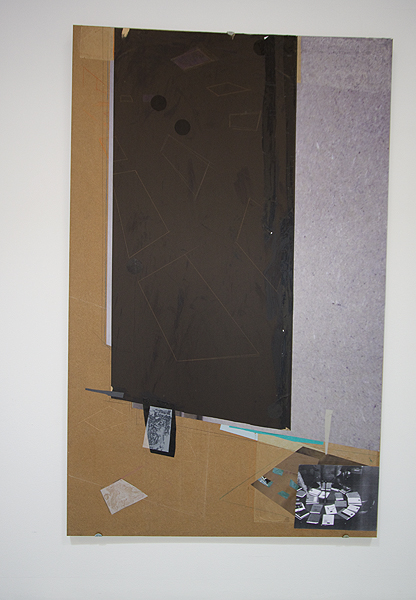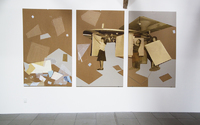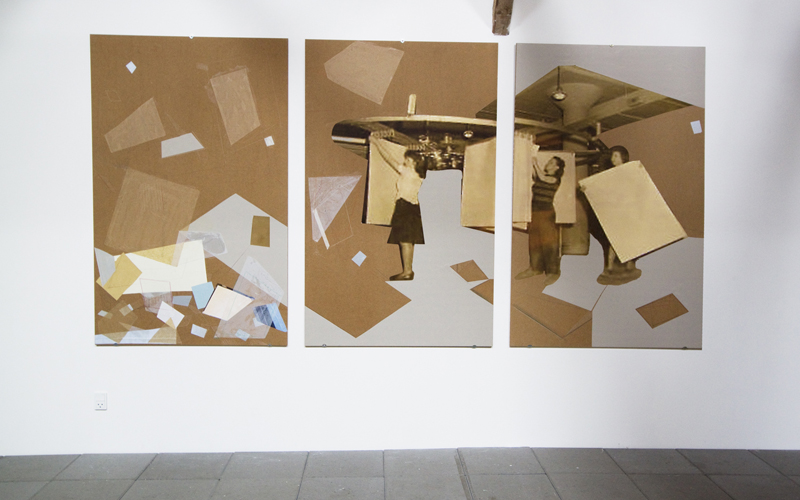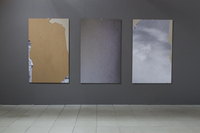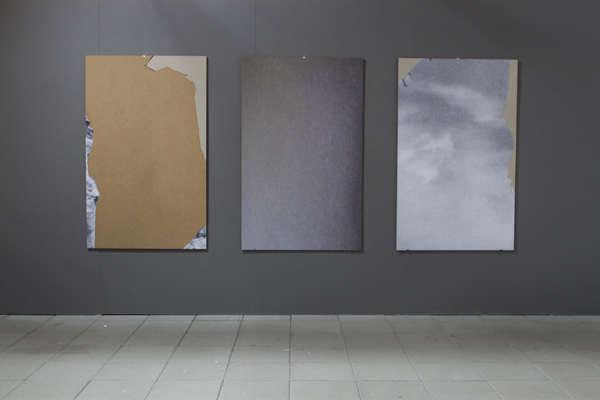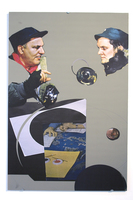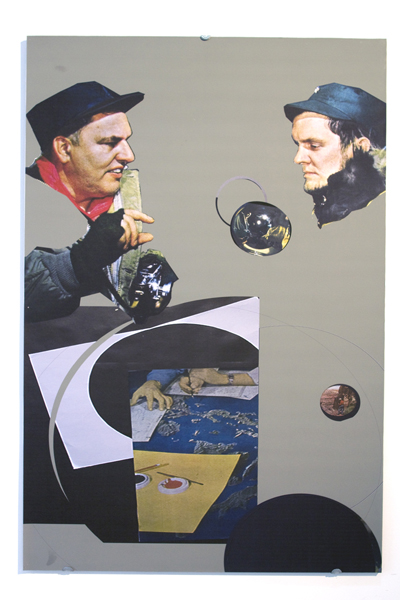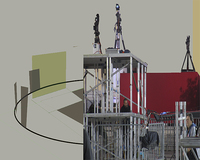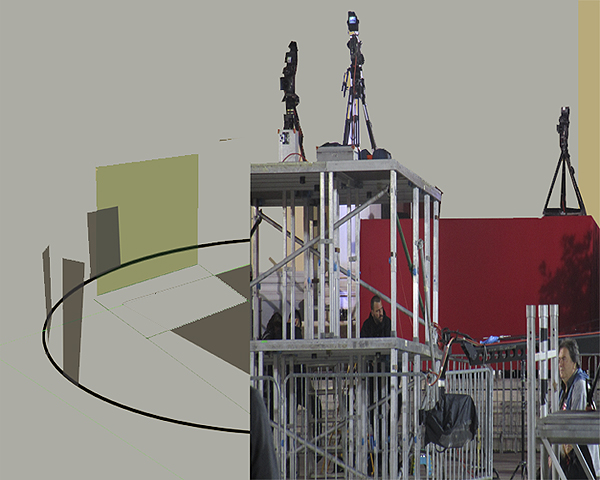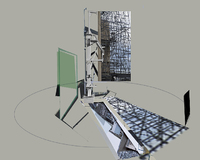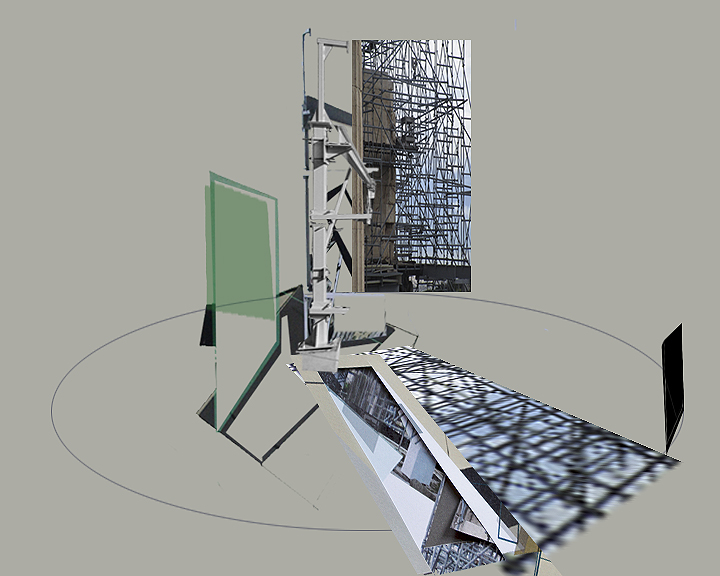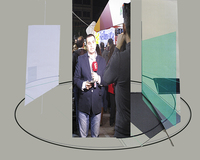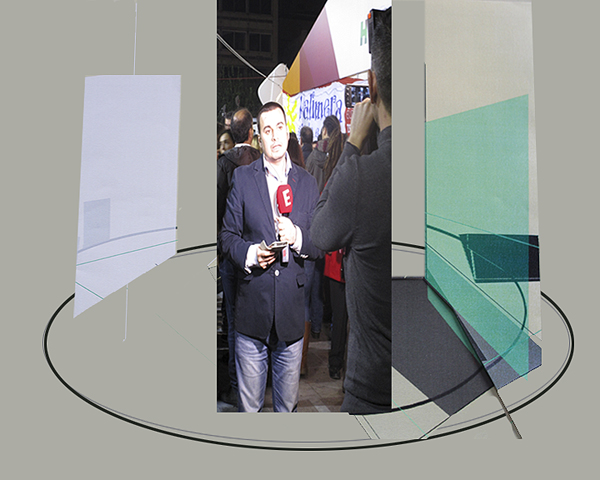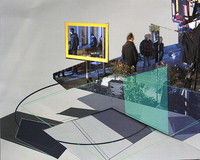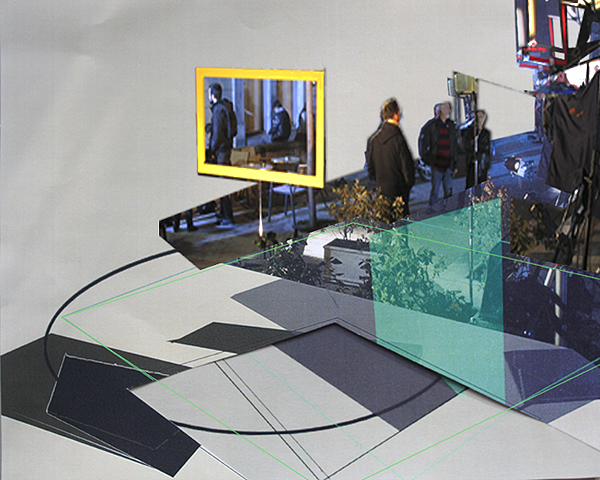"Crystal Ball 1949, Starting Point 2015, Zero 1760"
Solo show at Kunstpakhuset i Ikast, Ikast, DK (25.4.- 7. 6. 2015)
Art works:
"Crystal Ball 1949"
5 photo collages: materials: cut outs, photography, colored paper, prints mounted and glued on MDF board. Dimensions: 1 x 80 x 120 cm, 3 x 100 x 160 cm , 1 x 80 x 150 cm
Video sculpture with model space onto which is projected an animation/ collage images loop with sound track (dur: 4:30 min): materials: table with wheels from the 1950- 60 ś (dimensions 60 x 80 x 100 cm) , loudspeakers, headsets, video projector, small scale space, MDF board, Margrethe bowl, round chair. The sound track is an experimental conversation between artist Kristine Agergaard and Kirsten Otzen Keck.
"Starting Point 2015" :
Sculpture.: Freestanding wooden construction with attached paper as a screen, cut out circular white card board shape attached to paper screen. A series of collages is projected onto the screen, corresponding with the cut out circular shape. The collages are based on Kirstens photographs from Athens, and printed, cut out, mixed in collages. Dimensions: 150 x 160 cm, loop: 5.00 min, Sound: conversations with tourists.
"Zero 1760"
Sound work: materials: experimental conversation between artists Ulla Hvejsel And Kirsten Otzen Keck (dur. 9 min), mp3 player, headset, printed text, all mounted on MDF board.(dimensions: 80 x 120 cm)
Sculpture: freestanding wooden construction (dimensions: 150 x 200 x 60 cm) with projection of animation. (dur. : loop 1 min ). Attached metal thread and cords from which cut out circular and oval card board elements are hanging. The projected animation has an interplay with the hanging cardboard elements.
9 collages: materials:cut outs, photography, colored paper, prints glued on MDF board. Dimensions: 100 x 160 cm
Wall mounted sculpture: Two prints hanging from metal wire on wooden sticks, attached to mdf board. Dimensions: 120 x 80 cm
The Exhibition
The exhibition deals with the notion of who holds the right to define and tell the story of a place or an era. Abstract and geometric concepts describing space and time, such as "zero", "plane", "circle" and "beginning" are juxtaposed with real experiences from places and stories involved.
Kirsten is interested in ways to describe feelings of inhabiting space, whereas ways to understand larger spaces, that avoid a first hand experience, resolve to abstract and geometric interpretations and scientific measures. She is inspired by the writings of Peter Sloterdijk, especially in his trilogy of "Spheres".
The materials used in the art works- paper, MDF board, wood, card board, white floor are seen as "silent" compared to the sound tracks/ conversations and motives/ photographs.The materials are the starting points, and ultimately the neutral value in the art work, when stripped of motives.
The exhibition has three series in the media of still images projection, animation, interviews/ conversations, text, sculpture and collage. It takes it's starting point in the video sculpture "Crystal Ball" (2013) and spreads out into an interrelated network of big collages, interviews as soundtracks, and sculptures with projections of still images and animation video.
In working with the exhibition and the pieces, she have visited different places and later created works from stories she found there. In other cases she has used found images and research to blend facts and fiction.
The video sculpture "Crystal Ball" (2013) is inspired by a magazine image from the late 1940ś - 1950's, showing two men in conversation, seated at a table on which a big dark glass ball is placed.
The photo shows the two men simultaneously present in the "now" in the post WW II era, and as a reflection in the glass of the crystal ball, as a version of themselves in an abstract future place.
After world war II the world needed to be rebuilt. Magazine photos dating back to this time show far away places still as exotic. They are investigated, photographed, measured and thereby domesticated. In the continuation of this process, in which the globe is slowly shrinking, two women now find themselves inside the crystal ball, talking about the place they are. The silent conversation between the two men, as seen in the photo, is re- created by artist Kristine Agergaard and Kirsten Otzen Keck in a mix of manuscript and improvisation. More recorded experimental conversation with artists, scientists and lay men such as tourists are soundtracks in the other video sculptures.
In ”Crystal Ball 1949” the projected still image series consist of photo collages, in part based on images from the 1940's and 1950's of people creating maps.
In ”Starting Point 2015”, Kirsten was out in the streets of Athens taking photos of the construction of temporary scenographic stages created for the press photographers and news reporters, who were covering the election night in Greece, on 25 January 2015. In a montage, it is juxtaposed with her photos from the restoration work carried out on the classical theatres in Athens.The classical theatres and the ruins attract many tourists every year. The soundtrack consists of conversations between tourists and Kirsten about what they are observing on site, and about restoration of societies. Some conversations flow easily, while others are obstructed by language barriers. The conversations and the "silent" photos of professional reporters reporting from the pivotal and important election in Greece are juxtaposed.
”Zero 1760” is a group of works, consisting of a video sculpture, 9 large collages, a wall mounted sculpture with hanging prints and a sound work. The sound piece is a conversation carried out together with artist Ulla Hvejsel. Immediately upon reading three texts about the surveying of Denmark in the 1760's resulting in new maps of the country, the two artists recall how much of what they just read, has actually stayed with them in our short term memory, and how precisely. The texts are all looked up on the internet. The reading of the texts is intended to consider different methods for accuracy and precision at different times in history and memory. Reading texts on the internet, often implicates following links to other texts simultaneously and encourages speed. The methods employed in 1760, for surveying, such as triangulation, involved ideas on how to correct the inevitable overlapping and mistakes in the results from mapping.
"Zero 1760" has a video sculpture with cut out ovals and circular card board shapes hanging inside a wooden construction. Animation video is projected onto the hanging card board cut outs. The animation video shows various triangularly shaped cut outs from magazines, that run and move rhythmically across a wooden, white floor. They jump between the hanging cut out card boards and they seem to be searching for borders and places to stay. Once in a while it seems as if the white wooden floor erases the efforts of the triangles, forcing them to start all over.
The collages in "Zero 1760" deal with map making, but also discovering the basis materials as motif. A photograph of the surface of a MDF board and a landscape, nearing "zero"- a piece of gray sky somewhere in the world, are juxtaposed.
The works are researched during a residency at The Danish Institute of Athens, Athens, Greece, in January 2015. DIA has supported with a residency and a grant.
The Danish Art Foundation has supported the exhibition.![]()

